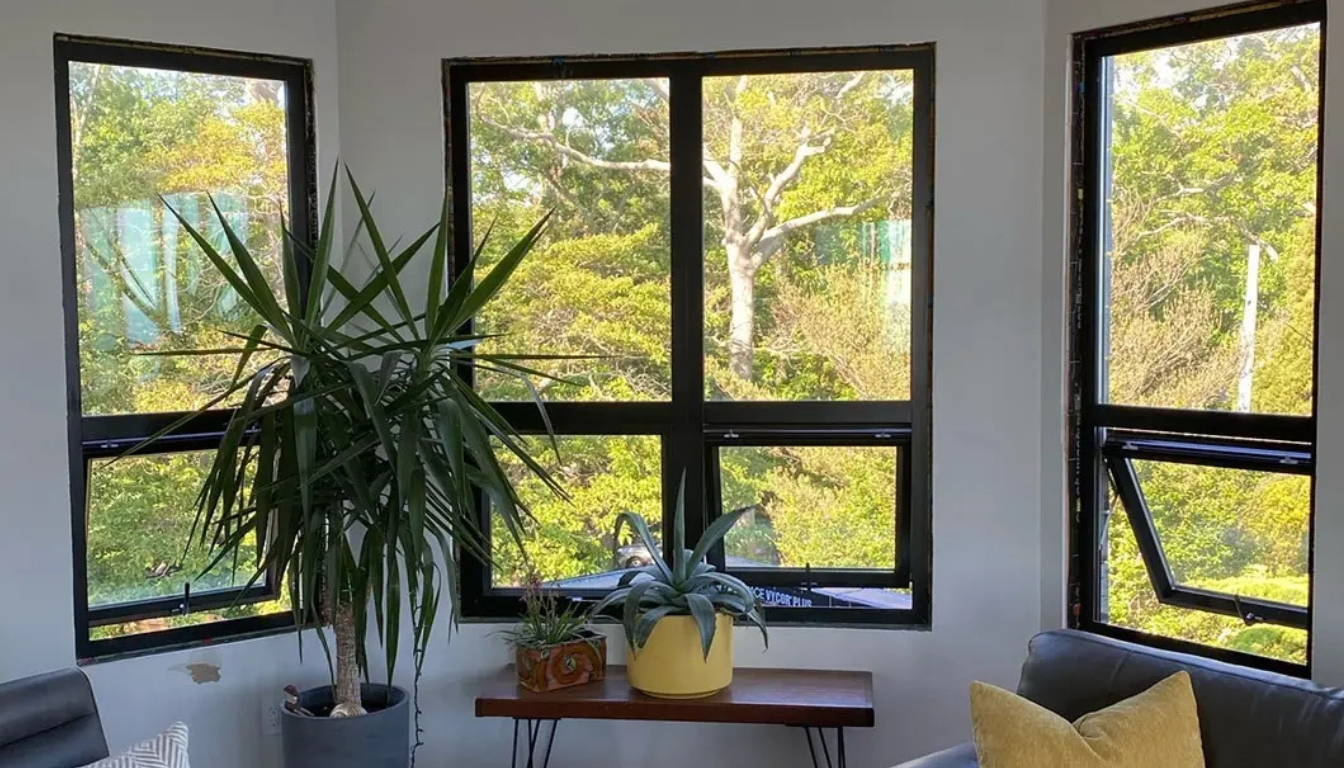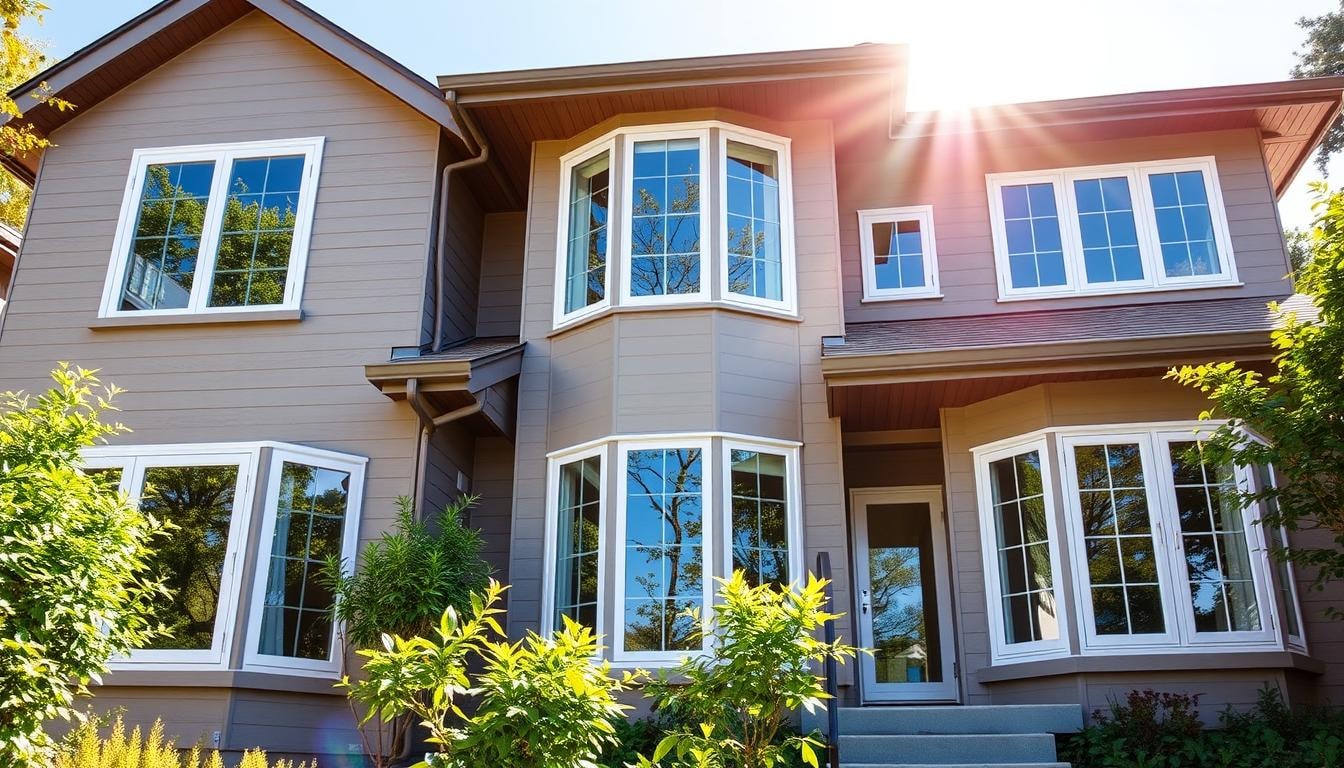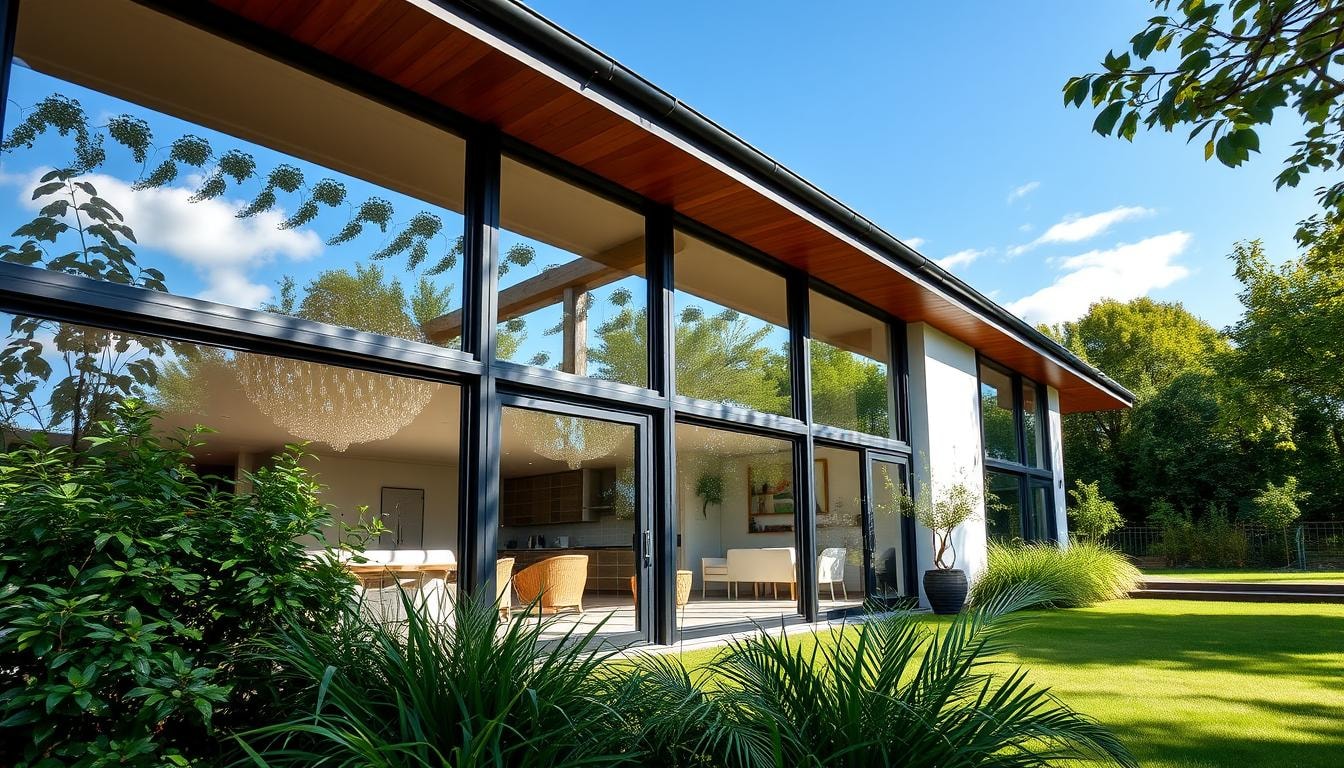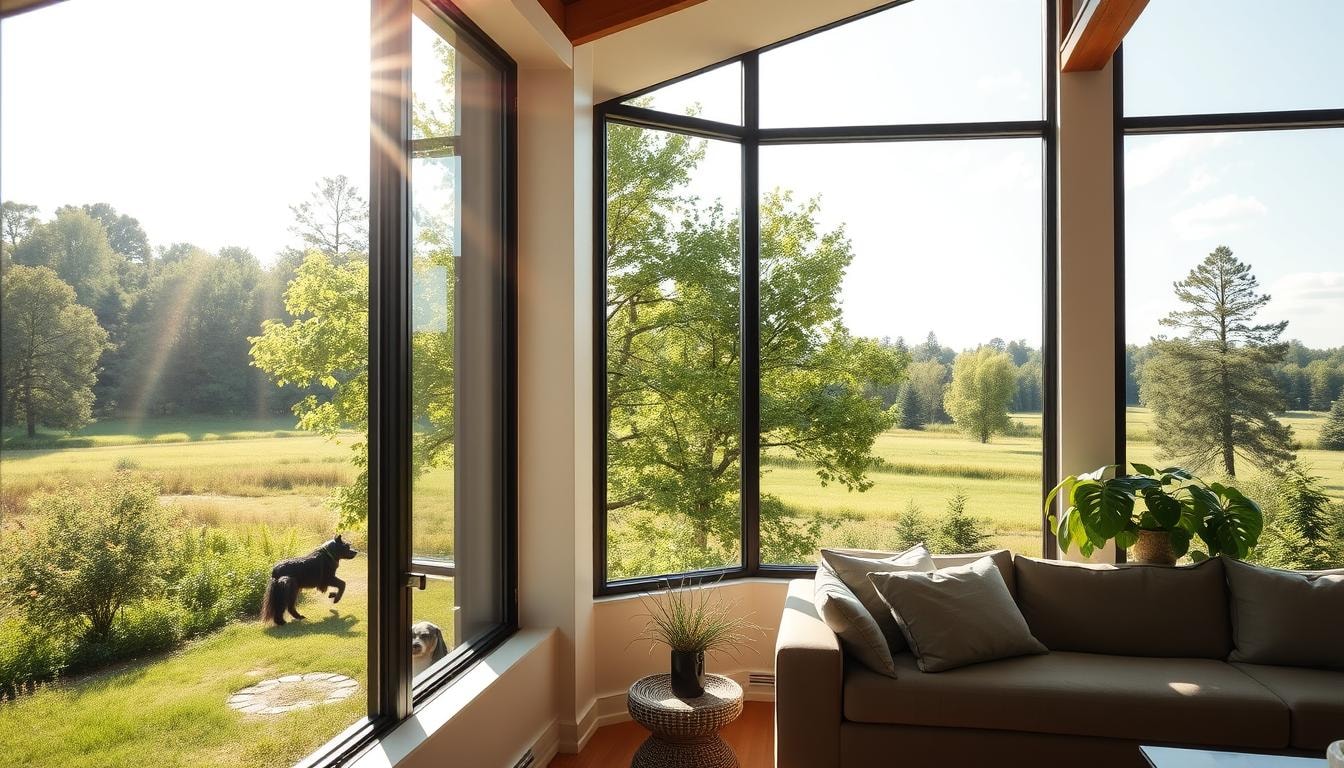
How Much Can New Windows Save on Energy
Getting new energy-efficient windows can really cut down on your energy bills. The Environmental Protection Agency (EPA) says EnergyStar-qualified windows can save 7% to 15% on energy costs. This means you could save $71 to $501 a year, based on where you live and the type of windows you replace.
Energy-efficient windows offer big savings over time. For example, in New England, swapping out old windows can save up to $15,000 over 30 years. But, remember, the cost of new windows might not be fully covered by the savings right away. A study in Nashville showed it could take up to 70 years to get back the money spent on new windows.
Key Takeaways
- Upgrading to EnergyStar-qualified windows can save 7% to 15% on annual household energy bills.
- Replacing windows can save $71 to $501 per year, depending on location and window type.
- EnergyStar windows come with warranties up to 20 years for glass and 10 years for components.
- Potential savings of up to $15,000 over 30 years by replacing single-pane windows in New England homes.
- The initial investment cost of new windows may not always be fully offset by long-term energy savings.
Understanding Energy Savings with New Windows
Getting new energy-efficient windows can really cut down your home’s energy use. These windows use special tech to keep heat from moving around. This is key for saving on heating and cooling costs.
Important metrics to look at are the U-factor, solar heat gain coefficient, air leakage, and visible transmittance.
Key Energy Efficiency Metrics
The U-factor shows how well a window keeps heat in. Lower numbers mean better insulation. The solar heat gain coefficient (SHGC) shows how much sun a window lets in. Lower SHGC means less heat.
Air leakage shows how much air can get through. Lower numbers mean tighter seals. Visible transmittance (VT) shows how much light gets through. Higher VT means more natural light.
EPA Energy Star Guidelines
The U.S. Environmental Protection Agency’s Energy Star program has rules for energy-efficient windows. Windows must meet certain standards for U-factor, SHGC, and air leakage to get Energy Star certified. This ensures they save a lot of energy.
Annual Energy Cost Reduction Potential
Switching to Energy Star certified windows can save a lot of money. Single-pane windows can save $71 to $501 a year. Double-pane windows can save $27 to $197 a year, says the Department of Energy. These savings show why choosing energy-efficient windows is so important.
The Real Cost of Energy-Efficient Window Installation
Getting energy-efficient windows can save a lot on your home’s energy use. But, it’s key to know the full cost of this upgrade. The price for each window can be from $150 to $6,500, with an average of $400. Adding labor, the cost for one window is about $850.
For a house with 10 windows, the total cost could hit $8,500. Energy-efficient triple-pane windows cost between $25 and $40 per square foot. Replacing all windows can cost between $6,685 and $33,425, based on the number and type of windows.
The initial cost of these windows is higher than regular ones. Yet, the long-term savings on energy bills can justify the expense. It’s vital to have them installed right for the best energy savings.
When thinking about replacing windows, weigh the initial cost against future savings. Look at ENERGY STAR® certification, frame material, and insulation to get the most energy savings. This way, you’ll see a good return on your investment.
Window Technologies That Drive Energy Savings
Upgrading to energy-efficient windows can cut your home’s energy use and bills. These windows use new tech to keep your home warm in winter and cool in summer. Let’s look at what makes these windows great for saving energy.
Low-E Coatings and Gas Fills
Low-emissivity (low-E) coatings are a big deal in window tech. They reflect infrared and UV light, keeping your home comfy. Adding gas like argon or krypton between panes makes windows even better at keeping heat in.
Multiple Pane Technologies
Double-pane and triple-pane windows are way better at keeping heat out than single-pane ones. The extra glass and air or gas in between stop heat from moving through. This means your home stays at a better temperature, saving energy.
Frame Material Options
The material of your window frames matters too. Fiberglass and composite frames are better at keeping heat in than aluminum. Vinyl frames are a good choice because they’re affordable and still save energy.
Using these advanced window techs can make your home much more energy-efficient. It’s a smart choice that helps the planet and saves you money in the long run.
Comparing Single-Pane vs Double-Pane Savings
Choosing between single-pane and double-pane windows affects your energy savings. Switching to Energy Star-qualified double-pane windows can save you $27 to $197 a year. But, savings depend on where you live.
Climate Zone Impact on Savings
Your location greatly affects how much you can save with new windows. In cold places like the Northeast or Midwest, double-pane windows save more. They keep the heat in better, cutting down on heating costs.
Long-term Energy Benefits
Double-pane windows offer big energy savings over 20 to 30 years. While they cost more upfront, they save money in the long run. This makes your home more energy-efficient and comfortable.
Deciding between single-pane and double-pane windows depends on your location, energy goals, and budget. Knowing these factors helps you choose wisely. This way, you meet your energy-saving goals without breaking the bank.
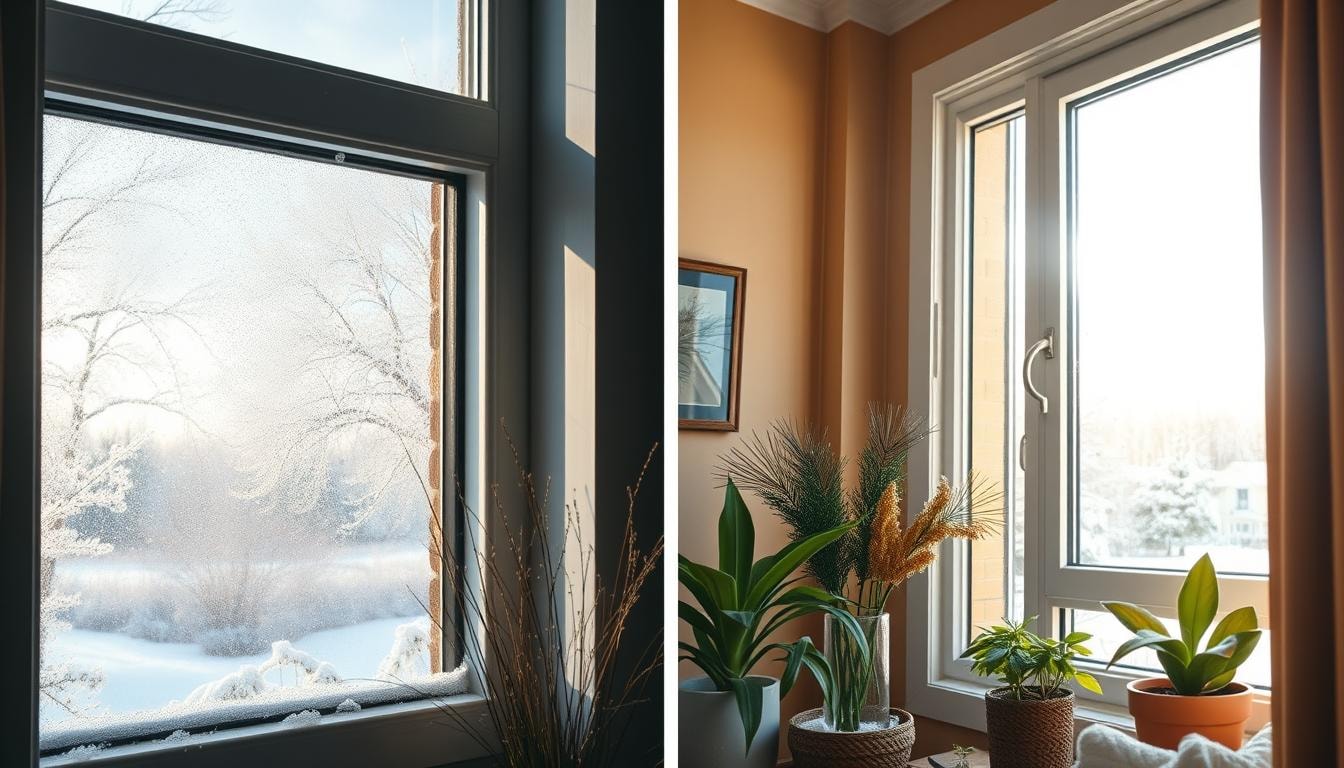
Return on Investment Timeline for New Windows
Getting new energy-efficient windows is a big step. It’s a big investment, but it’s worth it for homeowners. The time it takes to see a return on investment (ROI) depends on several things. These include the cost of installation, how much energy you save, and your local climate.
Windows can last up to 20 years. But, the time it takes to save money through energy savings can be long. A study in Nashville, Tennessee, showed a 70-year payback period for new windows. But, think about how new windows can also increase your home’s value and make it more comfortable.
The 2024 Cost vs. Value report found that vinyl windows can get back about 67.1% of their cost. Wood windows can get back around 62.9% on average. New windows can make your home more energy-efficient, lower your utility bills, and boost your home’s value.
Energy Star-rated windows can save you $126 to $465 a year on energy bills. The average ROI for new windows is 70-80%. Plus, homes with modern, energy-efficient windows often sell for more, adding to their long-term value.
Even though new windows cost a lot upfront, they’re a smart investment. They save you money on energy, increase your home’s value, and make it more comfortable. With tax credits, rebates, and a positive ROI, getting new windows is a smart choice that will pay off for years.
Tax Credits and Financial Incentives
Getting energy-efficient windows can save money in the long run. But, the upfront cost can be a problem for some. Luckily, there are tax credits and incentives to help cover the cost.
Federal Energy Star Programs
Homeowners can get a federal tax credit of 30% of the cost for Energy Star-certified windows. This is up to $600, for installations from January 1, 2023, to December 31, 2032. This is for main homes only.
State and Local Rebates
States and local areas also offer rebates for making homes more energy-efficient. This includes upgrading windows. These can lower the project’s cost and make it more affordable.
By using these tax credits and financial incentives, homeowners can pay less for energy-efficient windows. This makes the investment easier to manage and more affordable.
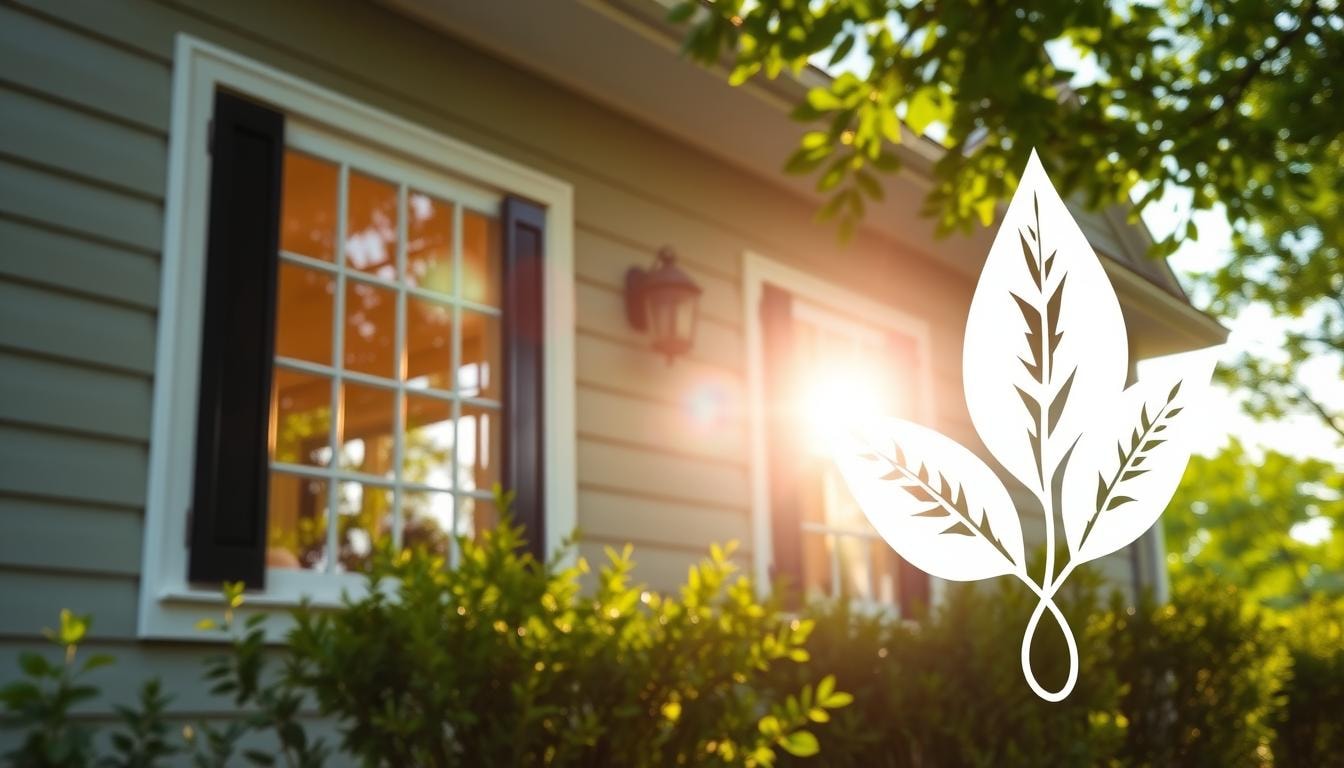
Impact on Home Value and Resale
Installing energy-efficient windows can really boost your home’s value. The U.S. Department of Energy says homeowners get back 78% of what they spend on new windows when they sell. These windows save on energy, need less upkeep, and work better, making them a big plus for buyers.
The Remodeling 2024 Cost vs. Value Report shows big returns on investing in new windows. Replacing wood or vinyl windows can give you back up to 67.1% of what you spend. Vinyl windows can even give you back 69% of the cost. Adding features like Low-E coatings can also increase your home’s value, costing between $50 and $1,650 per window.
Homes with lots of natural light and better security, like soundproof windows, sell for more. Buyers are willing to pay extra for these upgrades. They see the long-term savings on energy bills and the comfort they bring.
In areas with really hot or cold weather, energy-efficient windows save even more money. Bigger windows or those with more advanced features save even more energy. This makes your home more valuable when you sell it.
By getting energy-efficient windows, you save money right away and feel more comfortable. You also get a big boost in your home’s value when you sell. This makes your home more appealing to buyers, thanks to the energy efficient upgrades.
Ready to Upgrade Your Windows?
At Budget Windows, we specialize in energy-efficient replacement windows that reduce energy consumption and provide long-term savings. Our licensed professionals ensure expert installation to maximize the potential energy savings and comfort in your home. Get in touch with our experts today to explore the best solutions for your home’s needs.
Conclusion
Energy-efficient windows can save a lot of energy and make homes more comfortable. But, they might cost a lot upfront. Homeowners should think about more than just saving money.
Things like better comfort, less noise, and a higher home value are important too. With tax breaks and long-term savings, these windows are still a good choice. They’re especially good for those who plan to stay in their homes long or want to make their homes more attractive.
Upgrading to energy-efficient windows can lead to big savings on energy bills. Homes become more comfortable, and the environment benefits too. Even though they cost more at first, the long-term savings and benefits make them a smart choice.
There are many types of energy-efficient windows and financial help available. This makes it easier for homeowners to get the most out of this upgrade.
Whether or not to get energy-efficient windows depends on many things. Budget, location, and personal goals are key. But for those wanting to save money, be kind to the planet, and enjoy a more comfortable home, these windows are a great option.
FAQs
How much can energy-efficient replacement windows save on energy costs?
Energy-efficient replacement windows can save you 7% to 15% on annual household energy bills, which equals $71 to $501 per year depending on location and window type.
Are energy-efficient windows worth the initial cost?
Yes, energy-efficient windows are worth the investment. They reduce energy consumption by minimizing heat loss and cooling energy, saving money on high energy bills in the long run.
How does low-E glass help with energy savings?
Low-E glass acts as a thermal barrier, reflecting heat and sun’s heat, keeping cool air in during the summer and reducing heat transfer in winter, enhancing energy performance.
Can window replacement help reduce energy loss in existing homes?
Yes, replacing existing windows with energy-saving windows significantly reduces energy loss, improving insulation and helping HVAC systems work more efficiently.
What benefits come from hiring professional installers for window replacement?
Professional installers ensure the correct installation of energy-efficient replacement windows, improving energy performance, preventing air leakage, and enhancing window glass’s condensation resistance.





